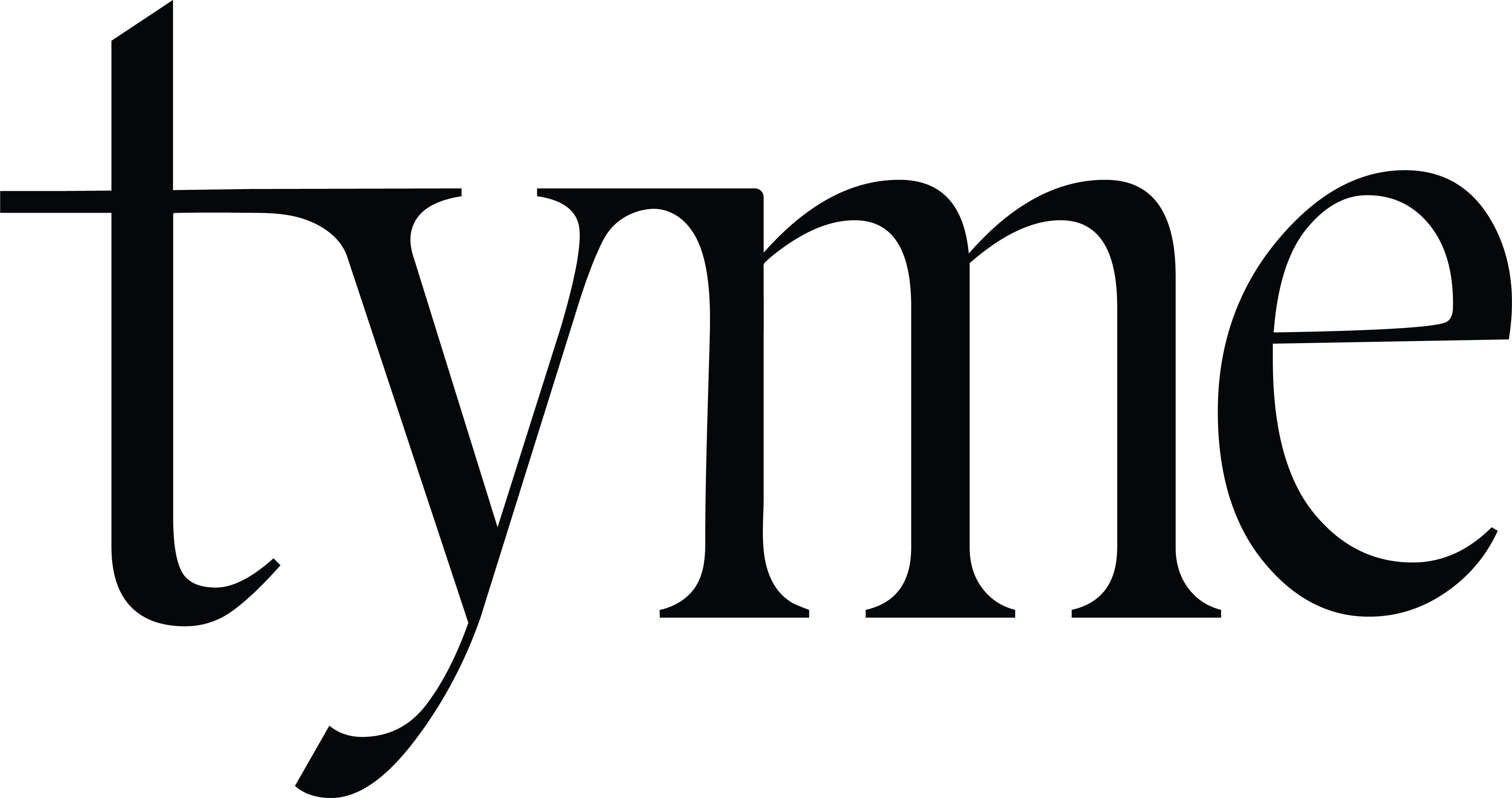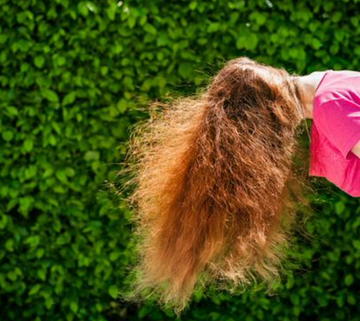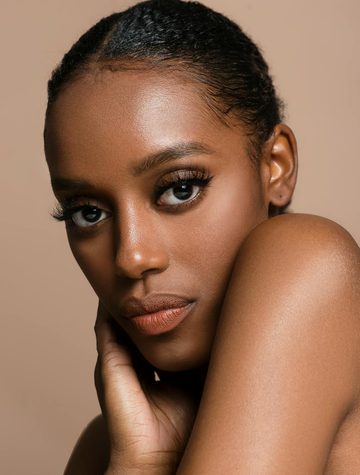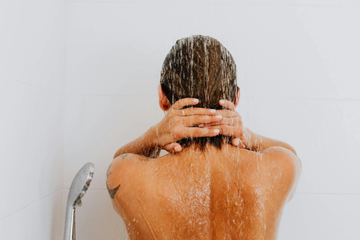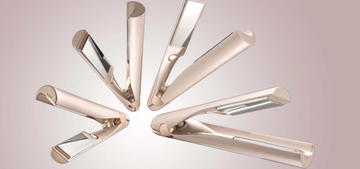The dos, the don’ts, and everything in-between
You're rocking a fresh perm, feeling like a million bucks, but then, a few weeks down the line, the itch to switch things up hits. Maybe you're craving those beachy waves for a summer festival, or perhaps you want to glam it up with some tighter curls for a night out. But wait... can you curl permed hair?
It's a question that plagues many perm-lovers. After all, your hair's already been through a chemical process, so adding heat to the mix seems like a recipe for disaster. And let’s not forget the fear of going full-on poodle if you add even more curls to the mix. It’s definitely not impossible, though.
Yes, curling permed hair requires a bit more finesse than styling virgin hair. But with the right knowledge and tools, you can absolutely achieve those gorgeous curls without sacrificing the health of your perm.
We're breaking down the myths and misconceptions about curling permed hair. We'll guide you through the essential steps to protect your precious locks while still achieving the styles you crave.
What is a perm?
Okay, before we get into the curling conundrum, let's take a quick trip back to Perm 101.
A perm, short for ‘permanent wave’, is basically a chemical makeover for your hair. It involves applying a special solution that breaks down the bonds in your hair strands, allowing them to be reshaped into curls or waves. Once the desired shape is achieved, another solution is applied to "lock in" those new curls, making them, well, permanent (or at least semi-permanent).
There are a few different types of perms out there, each offering a slightly different result. You've got your classic spiral perm for tight, corkscrew curls, the body wave perm for looser, more relaxed waves, and even the root perm for adding volume at the scalp. The type of perm to curl hair you choose will depend on your hair type, desired style, and how much maintenance you're willing to put in.
So, why would anyone put their hair through such a process? Well, perms offer a bunch of benefits. They can add volume and texture to fine or limp hair, transform straight hair into a head full of bouncy curls, and cut down on styling time for those who crave a low-maintenance routine.
But, and this is a big but, perms involve chemicals. And chemicals, as we all know, can be a bit harsh on your hair. That's why permed hair requires some extra TLC to stay healthy and strong. Think of it like adopting a new pet—it's a commitment, but the rewards are totally worth it.
Know thy perm, know thy hair
Not all perms are created equal, and understanding yours is key to successful heat styling. As we mentioned, there's a variety of perm types out there, each with its own unique effect on your hair's texture. A loose wave perm will give you those effortless, beachy vibes, while a spiral perm delivers tighter, more defined curls. And let's not forget the root perm, which adds va-va-voom volume without the full-on curl commitment.
Here's where it gets a bit science-y: perms work by breaking down the protein bonds in your hair, allowing them to be reshaped. Once the desired shape is set, another solution is applied to rebuild those bonds, locking in your new curls. This chemical process, while amazing for creating curls, also makes your hair more porous and prone to dryness.
Research shows that permed hair has a higher tendency to lose moisture and protein compared to untreated hair, making it more vulnerable to heat damage. So, while your permed locks may look strong and resilient on the outside, they're actually a bit more delicate than they appear.
That's why it's so important to assess your hair's condition before reaching for that curling iron. If your hair is feeling dry, brittle, or generally unhappy, it's best to give it a break from heat styling and focus on some pampering instead. There’s no about about it: healthy hair is the foundation for any great hairstyle, permed or not!
The golden rule: hair health comes first
Listen up, perm princesses! We’ve said it twice now and we’ll say it again. Before you even think about plugging in that curling iron, let's talk about the golden rule of heat styling permed hair: prioritize its health. Your hair has already been through a chemical process, so it's essential to treat it with extra care and love.
Think of your permed hair like a delicate silk blouse—you wouldn't toss it in the washing machine with your jeans and expect it to come out unscathed, right? The same goes for your curls. Harsh shampoos and styling products can strip your hair of its natural oils and moisture, leaving it dry, brittle, and more prone to damage.
So, what's a curl-loving gal to do? Here’s a brief run-down: First, invest in a good quality, hydrating shampoo and conditioner specifically formulated for permed or chemically treated hair. These products will help to nourish and hydrate your locks, keeping them soft and manageable.
Next, make deep conditioning your new best friend. Once a week (or more often if your hair is feeling particularly parched), treat your curls to an oil-based leave-in conditioner to replenish moisture and restore elasticity. Trust us, your hair will thank you for it.
Now, let's talk about heat styling prep. Before you even touch that curling iron, make sure your hair is completely dry. Wet or damp hair is more vulnerable to damage, so take the time to air-dry or gently blow-dry your hair on a low heat setting.
And don't even think about skipping the heat protectant! This magical potion creates a barrier between your hair and the styling tool, minimizing heat damage and keeping your curls looking their best.
Finally, remember that the right tools and techniques can make all the difference. Choose a curling iron with adjustable temperature settings and start low. You can always increase the heat if needed, but it's much harder to reverse the damage once it's done.
When you prioritize your hair's health and take the time to properly prep and protect it, you'll be well on your way to achieving gorgeous, damage-free curls. As always, a little patience and care go a long way when it comes to heat styling permed hair!
How to use curling irons, wands, and hot rollers on permed hair
Now that you're well-versed in the delicate nature of permed hair, let's talk tools. Just like a chef needs the right knives for different culinary creations, you need the right heat styling tools to achieve your desired curls without wreaking havoc on your perm.
As we briefly touched on before, first and foremost, look for tools with adjustable temperature settings. This is non-negotiable. Your permed hair is more susceptible to heat damage, so being able to control the temperature is essential. We recommend starting with a lower heat setting (around 200-300°F) and gradually increasing it only if needed.
Now, let's explore a few popular options:
Curling iron
A classic choice for creating a variety of curls, from loose waves to tighter ringlets. For permed hair, opt for a ceramic or tourmaline iron, as these materials distribute heat more evenly, reducing the risk of hot spots and damage.
How-to:
- Apply a heat protectant spray generously to dry hair.
- Section your hair into manageable portions.
- Wrap a small section of hair around the barrel of the iron, away from your face.
- Hold for a few seconds (the less time, the better!), then gently release.
- Repeat until all sections are curled.
- Let the curls cool completely before brushing or styling.
Curling wand
Similar to a curling iron, but without the clamp, offering more control and creating a more natural, beachy look.
How-to:
- Apply heat protectant to dry hair.
- Section your hair.
- Wrap a section of hair around the wand, holding the ends with your fingers (be careful not to burn yourself!).
- Hold for a few seconds, then gently slide the hair off the wand.
- Repeat until all sections are curled.
- Let the curls cool completely before styling.
Hot rollers
A gentler option for creating volume and loose curls, especially for those with long hair.
How-to:
- Apply heat protectant to dry hair.
- Section your hair and roll each section onto a hot roller, starting from the ends and rolling towards the scalp.
- Secure the roller with a clip.
- Let the rollers cool completely before removing them.
- Gently style the curls with your fingers or a wide-tooth comb.
Bonus tips for long-haired beauties:
The weight of long hair can pull down curls, making them appear looser. To combat this, try using smaller sections of hair and leaving the rollers in for a longer time. Consider using a setting spray or a high-humidity hairspray to help your curls hold their shape.
The TYME Iron Pro
This 2-in-1 tool serves as both a flat iron and a curler, allowing you to switch up your look without juggling multiple appliances. With its adjustable temperature settings and titanium plates, it offers precise heat control and even distribution, which is a major win for permed hair.
How-to:
- Apply a heat protectant spray to dry hair.
- Section your hair into manageable portions.
- Open the TYME Iron Pro and place a small section of hair between the plates, close to the roots.
- Gently rotate the iron away from your face, gliding it down the hair shaft.
- The slower you glide, the tighter the curl. Experiment to find your perfect wave!
- Repeat until all sections are curled.
- Let the curls cool completely before styling further.
Don't be afraid to experiment with different techniques and tools to find what works best for your hair type and desired style. But always use lower heat settings, minimize contact time, and apply a heat protectant. With a little care and attention, you can create stunning curls without compromising the condition of your perm.
Bonus tips and tricks for curling your perm
Your perm is already a headliner, but who says it can't have an encore? It's time to break free from the perm-only routine and experiment with some fresh, curl-boosting styles. And no, you don't need to rely solely on heat to achieve that salon-worthy finish.
Lazy-day glam
Sometimes, the most effortless styles are the most impactful. Embrace your natural texture by air-drying your hair and scrunching in a curl-enhancing cream or mousse. Hello, I woke up like this gorgeousness!
Heat-free curling methods
Want to switch things up without risking heat damage? Braid your damp hair before bed and wake up to mermaid-inspired waves. Or, experiment with foam rollers or flexi rods for bouncy curls that won't fry your strands.
Upside-down styling
Don't let gravity weigh down your long, permed hair. Style it upside down for a root lift that'll make your curls sing, or use a diffuser attachment on your blow dryer for a gentle boost of definition.
Product power-ups
Opt for curling products for permed hair. Ditch those heavy gels and mousses that can leave your curls feeling crunchy and lifeless.
Have fun playing with different styles and techniques, and don't be afraid to step outside your comfort zone. With a little ingenuity and the right approach, you can achieve a variety of salon-worthy looks without compromising the health of your hair.
Can you curl permed hair? Yes, you absolutely can
The verdict is in: You can curl permed hair. But don't get too trigger-happy with that curling iron just yet. Your permed hair needs a little extra TLC (even more so than your natural hair), so tread carefully. Choose the right tools, keep the heat low, and always, always use heat protectant.
Your perm doesn't have to be a one-trick pony. It's a versatile foundation for a whole range of looks. So, armed with these insights, you don’t have to fear heat styling if you’ve recently had a perm. Whether it's beachy waves, defined ringlets, or something in between, your perm is ready to play.
